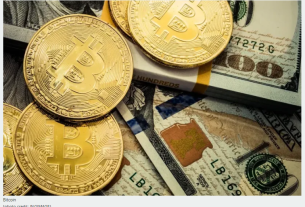Digital inclusion can be truly life-changing for women, giving them access to online education and other services, new sources of information, expanded networks, new marketplaces, and potentially new financial tools previously inaccessible – all of which can in turn boost women’s agency, self-reliance, and economic activity. It stands to reason then that the United Nations’ theme for International Women’s Day this year is “DigitALL: Innovation and technology for gender equality.”
But At CGAP, we believe digital financial inclusion is a necessary condition for women to be digitally included and economically empowered.
For example, digital financial services allow women in agriculture in Mali, Senegal, and Tanzania to access and use myAgro, an innovative mobile layaway service that has allowed 100,000 smallholder farmers, over half of which are rural women, to use their mobile phones to buy climate-smart seeds and fertilizers in small increments, while at the same time benefiting from agriculture training. MyAgro estimates that their services have led to a significant increase (78% on average) in farmer income and production.
Women’s financial inclusion remains a challenge around the world
. Furthermore, a quarter billion women who have an account admit that they have not used it for the past year. Globally, women are 31% more likely to have an inactive account than men. This stymies women’s ability to be agents of change in their own lives and to leverage digital opportunities to build a more inclusive and resilient future for themselves, their families, and their communities.
For example, women in households burning solid fuels spend 18 hours a week on average gathering wood for cooking and heating. With access to financial services, women can invest in biodigesters or biogas appliances that save them time on firewood collection. This in turn enhances their quality of life, allows them to spend time on economic activities, and yields health benefits to the household from burning cleaner fuel.
Achieving gender parity in financial inclusion is no easy task
Social norms (i.e., collectively held expectations and perceived rules for how individuals should behave based on their gender identity) affect the ability of the entire digital financial ecosystem to service women.
First, demand for financial services by women themselves is impacted by social norms that limit their mobility, economic activities, ability to access and use smartphones, financial and digital literacy, and more.
Demand for financial services by women themselves is impacted by social norms that limit their mobility, economic activities, ability to access and use smartphones, financial and digital literacy, and more.
Second, financial institutions are also often less inclined and/or less equipped to design and offer financial services for women due to social norms that constrain their ability to specifically assess women’s financial needs or limit the participation of women in their agent, employee, and management teams. For instance, beliefs that women should not have financial privacy from their husbands may lead financial institutions to discount them as potential independent clients and not pursue women-focused marketing and client acquisition.
Furthermore, financial sector authorities can actually be contributors to the gender gap in financial services if they fail to perceive and account for women’s lived realities due to gender norms. In many countries, for example, know-your-customer regulations require financial institutions to rely on formal forms of identification to screen new clients. But in countries where women lack many of the forms of identification men typically have, this may preclude them from opening accounts.
Similarly, rules that assign higher risks and provisioning to loans without traditional collateral, regardless of the lending methodology, may penalize women in countries where women have lower rates of property ownership than men due to norms that concentrate asset ownership in the hands of husbands and prioritize inheritance among sons.
Change is clearly needed; it is also possible
Making progress on women’s financial inclusion requires making changes to digital systems and processes. Here are six avenues for creating a digital financial ecosystem that supports women’s financial inclusion.
1. Gather gender-disaggregated data
While in 2022 financial sector authorities in only 82 countries (out of 189) reported sex-disaggregated data to the IMF’s Financial Access Survey, gender-disaggregated data and analysis are essential to understanding where financial services are falling short in empowering women.
2. Promote digital connectivity and digitization of payments, particularly to women
Evidence suggests that when wage and/or government payments are digitized rather than paid in cash, women receiving digital payments are more likely to open mobile money accounts and exercise more control and participation in decision-making about how to spend their payments. But Findex suggests that in many countries, payments to women are still largely happening in cash.
3. Leverage digital platforms to bundle services
By bundling financial and non-financial services, digital platforms can help more effectively address the unique challenges of women. For example, by combining digital data, digital financial services, mobile channels, and other services, AgTech platforms can help providers to bundle services and provide rural women with better access to markets, information, and finance. These platforms can also reach women at the last mile while addressing mobility, time, and privacy concerns.
4. Expand agent networks to reach women who live in rural areas and have limited mobility
Agent gender is a significant factor for women’s financial inclusion in contexts with restrictive gender norms. Women agents have also been found to better serve women and other harder-to-reach customer segments — like youth, people with disabilities, and the elderly — than their male counterparts.
5. Ensure policies and regulations do not perpetuate gender norms that prevent women’s financial inclusion
Using tiered know-your-customer regulations and relying on forms of identification better suited to women may be very effective in fostering greater women’s financial inclusion.
6. Develop adequate consumer protection frameworks that incorporate women’s lived experiences
As women are more susceptible to consumer risks from digital financial services than men, and also less equipped to rectify matters in the aftermath, a customer-centric consumer protection framework that focuses on the experiences and results that consumers — especially women — obtain from using financial services, and examines how providers engage with them throughout the product life cycle, is essential.
Global understanding about how to address restrictive gender norms to promote women’s financial inclusion – including women’s digital financial inclusion – remains limited
Gender norms continue to present a huge stumbling block to women’s financial inclusion. CGAP has been facilitating peer learning groups to enable better and more consistent diagnostics to understand how to overcome such barriers, both in terms of policy responses and product design. An ecosystem approach, informed by gender-disaggregated data and a strong understanding of social norms, is the only way to make real progress in women’s financial inclusion. At CGAP, we are working on testing such a holistic, evidence-informed approach and look forward to sharing our findings.
An ecosystem approach, informed by gender-disaggregated data and a strong understanding of social norms, is the only way to make real progress in women’s financial inclusion.
On this International Women’s Day 2023, join us in our commitment to creating a world where women are financially active, digitally included, and economically empowered – ultimately allowing them to build a more inclusive and resilient future for themselves, their families, and their communities.



